Endak Hudson’s Range Rover Classic is one wonderful element of a broader, beautiful story. Dak (as he is known to his friends) and his sister were adopted by an Australian family nearly twenty years ago and relocated from Ethiopia to a new world of love and opportunity in a picturesque town called Lane Cove, a few miles northwest of Sydney, New South Wales.
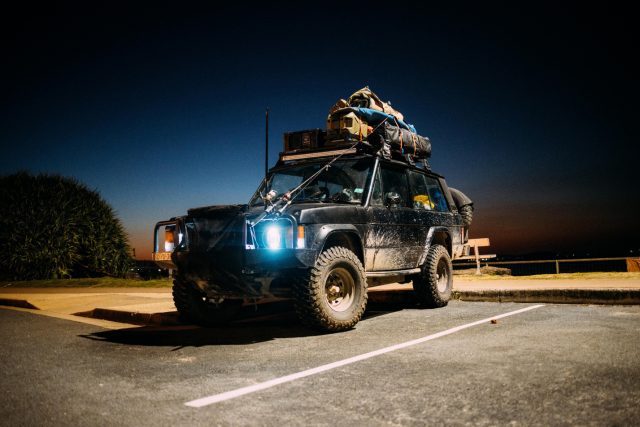
Building a car for travel and adventure has always been a lifelong dream, and Dak has been a fan of classic British off-roaders ever since laying eyes on his father’s Land Rover Discovery when he first arrived in Australia at the age of six. As far back as he can remember, Dak has been crazy about Land Rovers and has spent much of the last two decades buying and fixing Solihull’s finest as a hobby.

When Dak was twelve, he volunteered at a specialist Land Rover workshop where he learned to service vehicles. One client was skeptical of such a young lad working on his 1975 Range Rover, but the head mechanic assured the client that Dak was capable and would be supervised. The client collected the vehicle and was impressed with the youth’s work; he asked Dak which Land Rover was his favorite, to which Dak answered, “the two-door Range Rover!”. Later that year, the client returned to the workshop, tossed Dak the keys to the old Range Rover, and said, “take care of it and, most importantly, have fun.” Dak’s dad arrived at the workshop later that week with his Discovery 1 and towed the old Range Rover two hours northwest of Sydney to the family’s hobby farm, where Dak would spend much of his adolescent days driving it around with mates, suffering occasional breakdowns and learning how to repair the vehicle.
Dak ultimately studied civil engineering and finance at the University of Technology in Sydney. After completing University, Dak celebrated by taking a gap year and fulfilled another dream by circumnavigating Australia in his 1982 Range Rover Classic (dubbed ‘‘Rodney’’), which had been prepared for the ultimate adventure over a year of intensive work.
The 28,000-mile journey around Australia included severe and challenging terrain that exposed the Range Rover’s weaknesses. There were stress cracks in the frame and the rear bumper, the suspension had begun to sag, and the gearbox had become noisy and prone to overheating. It was time for a serious rebuild. Dak relocated to Darwin in the Northern Territory of Australia, secured employment as a construction site manager, and proceeded to tear down and rebuild the Rangie from the ground up, which took 18 months and well over 3,500 hours of loving labor.

“Many thought I was absolutely crazy, but I had one goal, to build the most capable overlanding Range Rover in the world and get back out on the road ASAP. Looking back, I was extremely naive about how long this process would take me; however, as I progressed through the build, my plans drastically changed, and I went from just replacing the gearbox and reorganizing the inside layout to a full-blown strip and rebuild.”



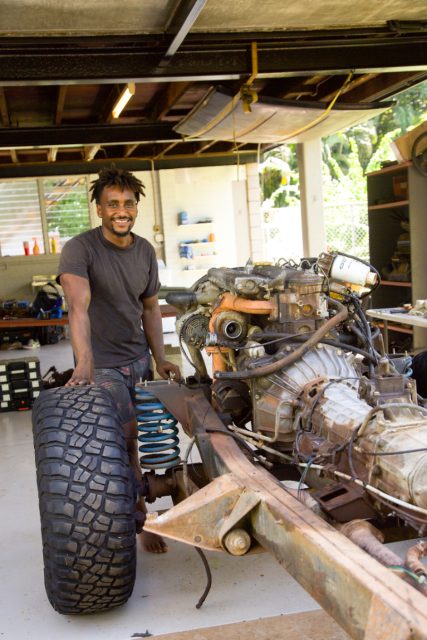


Learning from his mistakes and experiences on the road, Dak set out to make radical changes to the interior layout and design, focusing on creating more internal storage and reducing the use of the roof rack to lower the vehicle’s center of gravity. Dak loves this vehicle and wants to see it last as long as possible; for this reason and peace of mind, the chassis and entire body have been fully galvanized when crossing rivers, beaches, or even salt lakes. The internal layout could have been better, as the rear bench seat, heavy metal drawers, and Engel fridge were all jammed in the back, with the remaining camping gear stacked high on the roof rack. The Range Rover’s modifications list is extensive as the vehicle is a hybrid between a Range Rover, a Discovery, and Defender. Dak sought to equip the Range Rover with the most common Land Rover parts available from parts suppliers, workshops, and junk yards, which he might encounter as he traveled Australia.






The drivetrain is mainly from an early Discovery (which shared a lot of Range Rover DNA). The old, tired 3.5-liter V8 was swapped for a 300 Tdi equipped (eventually) with an aftermarket intercooler and variable vein turbo. Dak also modified the intake manifold for improved airflow to the motor, coupled with a tweaked fuel pump which gave the Range Rover more usable power. The four-speed LT95 gearbox was swapped out for an R380 five-speed with more oversized bearings and the 0.732 5th gear found in the V8 R380s. These improvements have drastically improved highway cruising speeds and brought the rpm down to the mid-2000s at 70 mph, making the Range Rover an economical tourer (as opposed to the dismal 10 mpg some have suffered with the gas-powered Range Rover V8). The transfer case has been swapped out for a Defender LT230 with a 1.410 ratio high range. Dak installed 30 percent reduction gears to introduce extra slow crawling and better vehicle control over stepped terrain while driving in low range. To further add off-road prowess, the differential housings were braced and fully rebuilt with heavy-duty axles (27 spline rather than the conventional ten spline), Ashcroft chromoly constant velocity joints (CVs), and Ashcroft front and rear air lockers activated by the ARB Twin Air air compressor.
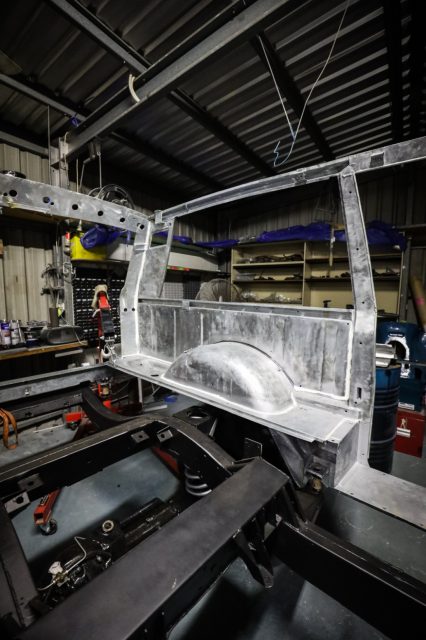



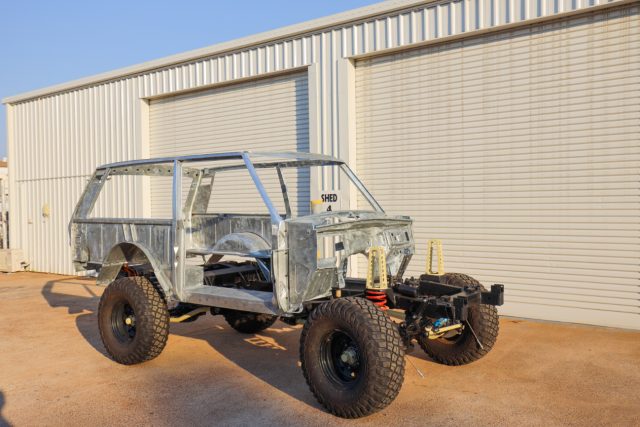


The fuel tank is a custom 32-gallon aluminum tank with 4mm sides and a 10mm underside plate for better puncture protection. Located under the side sills are two stainless steel water tanks with a combined capacity of 24 gallons. The water tanks were constructed of stainless steel for added protection so that clean, filtered water could be stored and consumed without further treatment. The vehicle is fitted with large “gullwing” side panels that replace the original rear windows and allows access to internal aluminum storage boxes through the wheel arches. The front bumper bar is a conventional old-school ARB bar modified to house a period-correct Warn high-mount winch, sourced second-hand, disassembled, and restored to near-new condition. Much of the interior is clad in insulating and sound-muffling Dynamat to improve daily usability.



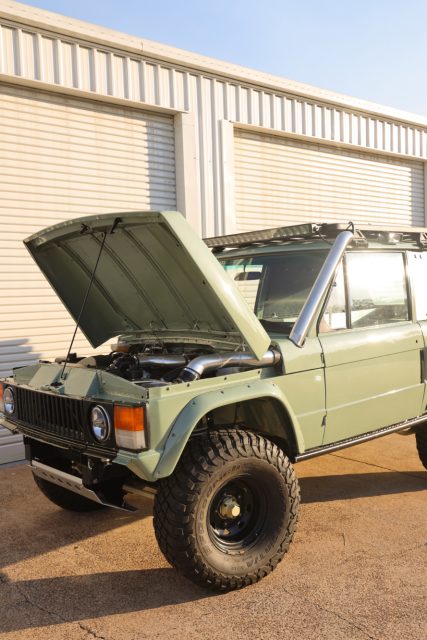
Lucas, the Prince of Darkness, is the Achilles heel of all old Land Rovers, and the electrical system for both the vehicle and the onboard systems needed a revamp. The Rangie is hooked up with six mining-grade LED Stedi high-performance lights that illuminate 360 degrees around the truck, complemented up front by a 50-inch Stedi light bar and “camping” lights within the vehicle. The 12-volt system consists of a Redarc BCDC charger supplying 50 amps to the main battery and the secondary 280 Ah lithium battery.

When asked what he might have done differently, in hindsight, Dak replied that there is not much that he would change as he was sure to work conscientiously and carefully while avoiding hacks and shortcuts. Dak is so in love with the final product that he has to remind himself when exploring that the vehicle was built for offroad exploration, not merely as eye candy, which the Land Rover certainly is.



“If anyone is thinking about undertaking a rebuild of their vehicle, I highly recommend it. It’s not an easy process, and you can find yourself experiencing momentary lows, but the reward and sense of achievement, once it’s done, is nothing short of amazing. I learned a lot about building a car, and, more importantly, I learned a lot about myself in the process.”


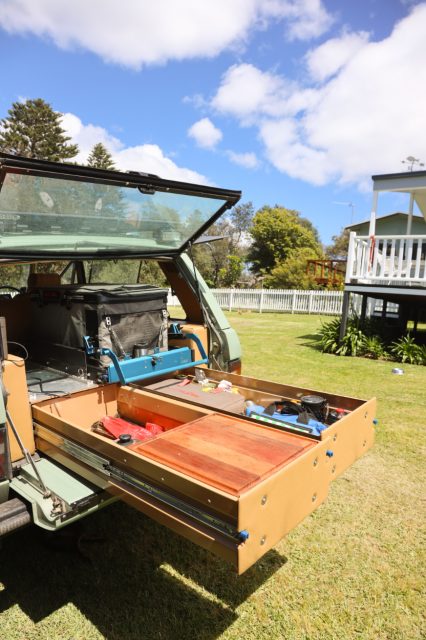
Since finishing the build, Dak and Rodney have traveled over 15,000 miles, traveling the Northern Territories, South Australia, and New South Wales. To address the lack of space in the Range Rover, Dak sourced an ex-Australian military trailer that he purchased and modified for touring during the rebuild of the Rangie. The trailer is an excellent addition to the setup as it has allowed Dak to haul all the additional gear required for remote travel. Equipped with tools, the trailer also acts as a mobile workshop if Dak needs to carry out repairs or assist other travelers on the road.

His long-term ambition is to overland the world in Rodney and experience the various beauties of life by road. Currently, Dak is dreaming of a trip to the United States, where he plans to tour the West Coast in an LWB Range Rover Classic and experience Moab, Death Valley, and so much more.
Specifications: 1982 Range Rover Classic
Power
2.5-liter 4-cylinder turbodiesel (300 Tdi)
Suspension and Drive
- R380 manual gearbox
- LT230 Transfer case with 30% reduction gears
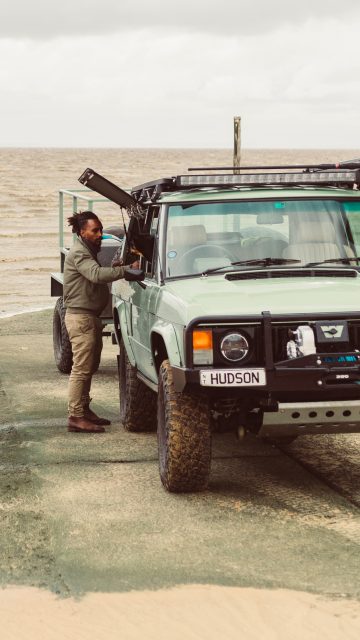
Wheels and Tires
Original RRC Prostyle rims widened to 8-inches wrapped with a set of BFGoodrich KM3 tires
Recovery and Armor
- 1982 Warn high-mount winch (8,000 pounds)
- APT front bash plate
- Custom 10mm aluminum fuel tank bash plate
- Front and rear diff guards
Electrical Power
- Custom-built 280 Ah lithium battery controlled by a Redarc BCDC 50 amp charger monitored by Bluetooth app
- The trailer has a 250 Ah AGM battery to assist with long-distance remote travel.
Accessories
- Onboard 12-volt twin motor air compressor with auxiliary air tank
- Front and rear air lockers
- Two 55-liter sill-mounted water tanks powered by twin reversible electric pumps
- Rhino-Rack platform roof rack with custom-made spacers to suit RRC roof
- Stainless steel snorkel
- Mining-grade Stedi lights with a 120-degree spread (two on each side and in the back)
- Front-facing LED bar light on the roof rack
- CELFI-GO unit (mobile reception booster/wifi)
- Rockford Fosgate sound system with subwoofer
- Gullwing windows and internal lights
- Custom rear bar housing two spare wheels
- Custom-made front and rear-facing drawer system
- MSA fridge slider with Engel 60-liter fridge/freezer
Do yourself a favor and head to Dak’s social media; you won’t be sorry.
Instagram: @Dakhudson.adventure
YouTube: Endakhudson.adventure

Our No Compromise Clause: We carefully screen all contributors to ensure they are independent and impartial. We never have and never will accept advertorial, and we do not allow advertising to influence our product or destination reviews.


